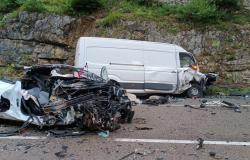Installing large photovoltaic parks in rural areas to meet the consumption of urban areas and industries… the equation is enough to fuel dissensions between rural and urban areas. Social accessibility, which is based on the fact, according to surveys, that 80% of the population is in favor of renewable energies, particularly solar, differs from local accessibility, with locally blocking points which may appear around certain projects. . We saw it in Gironde with the Horizeo project “, explains Claire Bordenave, member of the Economic, Social and Environmental Council (CESE) and renewable energy economist. However, acceptability is a social dynamic, a process that starts from the design of the project, when it can still evolve, but also during its development and operation.
Why Horizeo is reducing the size of its giant solar power plant in Gironde
One of the sticking points is crystallizing around a race for land. There is indeed some competition with calls for expressions of interest launched by local authorities for public or semi-public land or even from large private landowners to convert brownfield sites. It is becoming increasingly complicated to have access to interesting plots of land, close to connection points, particularly in the southern regions of France. “, notes Maud Gaide, deputy solar director of developer Q Energy.
The countryside, energy farms for cities?
In this context, targeting already artificialized land can provide avenues, even if the solutions are not always easy to implement. The city of Bordeaux is, for example, considering installing solar panels on the underwater base and Bordeaux Métropole above an urban boulevard. “ The submarine base is a historic site and we had to work with the architects of the buildings of France: in order not to remain prisoners of a heritage, these references should evolve. As for the roads, the installation of photovoltaic panels raises many economic, technical and safety questions, but we must at least try to study whether these projects are viable because we need to exploit the artificial surfaces as much as possible. “, notes Claudine Bichet, deputy mayor of Bordeaux and vice-president in charge of climate and energy transition for Bordeaux Métropole.
The fact remains that with an ambition to make solar the first renewable energy in the territory in 2050, focusing on artificialized soils alone is not enough. “ We will have to create strong cooperation, preferably with our neighboring partner territories. It is at the territorial level that we can truly create a project that makes sense, that makes the actors understand the project and adhere to it. », continues Claudine Bichet.
For Morgane Bénard, head of the Nouvelle-Aquitaine energy division of the Enercoop cooperative network, we must however be careful that “ rural areas that already feel like the food farms of big cities are not also experienced as their energy farms! »
Multiplying the economic benefits
In order to avoid tensions, it is therefore essential to involve local stakeholders. For Maud Gaide, it is above all transparency on what they can get from the projects that the territories especially need. Among the avenues to consider: price reductions on consumption, the organization of local self-consumption collectives or the promotion of participatory financing allowing residents to be part of the project.
Morgane Bénard, however, insists on the need to involve local stakeholders from the design and financing phase to ensure that they capture part of the value created by the sale of electricity. A study by Ademe [Agence de l’environnement et de maîtrise de l’énergie, ndlr] and the movement to promote renewable energies Shared Energy shows that all projects whose governance and financing are in the hands of residents and communities bring to the territory two to three times more economic benefits than a traditional project ” she explains.
Beyond direct financial externalities, “ One of the great lessons of the EESC is that more than the nature of decisions, it is the way in which they are taken that makes them acceptable in the long term and allows citizens to take ownership of them. », concludes Claire Bordenave.
Renewable energies seek their promised lands






